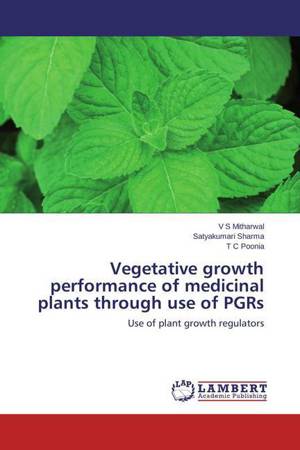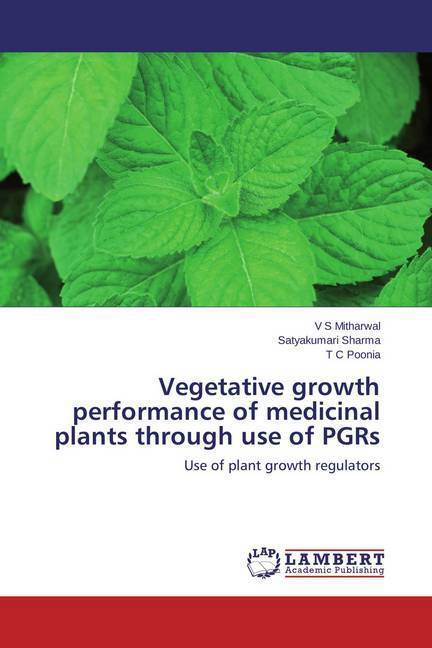
- Afhalen na 1 uur in een winkel met voorraad
- Gratis thuislevering in België vanaf € 30
- Ruim aanbod met 7 miljoen producten
- Afhalen na 1 uur in een winkel met voorraad
- Gratis thuislevering in België vanaf € 30
- Ruim aanbod met 7 miljoen producten
Zoeken
Vegetative growth performance of medicinal plants through use of PGRs
Use of plant growth regulators
V S Mitharwal, Satyakumari Sharma, T C Poonia
Paperback | Engels
€ 54,95
+ 109 punten
Omschrijving
Athurveda, Charak Sangita, Sushrut, Sanghita have given an excellent account of medicinal plants. A number of books on medicinal plants known as herbals were written by various herbalists (Fucus, Cordus, Lobel etc.). India was the leading country in the study of medicinal plants before sixteenth century. Withania somnifera L. (Dunal.) and Tephrosia purpurea L. (Pers) occupy a reputable position in India pharmacology. Both these species enjoy considerably therapeutic repute in Ayurvedic, Homeiopathic, Unani and Allopathic systems of medicine. It was concluded that such studies may be useful to further the domesticational and cultivational research on medicinal plants. Ayurveda is the oldest scientific system of medicine in the world. The objectives of Ayurveda are primarily related to human health and longevity. Every plant has potential to generate energy. Many a herb are used for treatment of diseases, revitalization sp. vitalizer, aphordisiac and other purposes. Minerals and animal products are also used as medicines in Ayurveda but herbal us is considered to be the most important.
Specificaties
Betrokkenen
- Auteur(s):
- Uitgeverij:
Inhoud
- Aantal bladzijden:
- 100
- Taal:
- Engels
Eigenschappen
- Productcode (EAN):
- 9783659287084
- Verschijningsdatum:
- 11/02/2015
- Uitvoering:
- Paperback
- Afmetingen:
- 150 mm x 220 mm
- Gewicht:
- 159 g

Alleen bij Standaard Boekhandel
+ 109 punten op je klantenkaart van Standaard Boekhandel
Beoordelingen
We publiceren alleen reviews die voldoen aan de voorwaarden voor reviews. Bekijk onze voorwaarden voor reviews.








